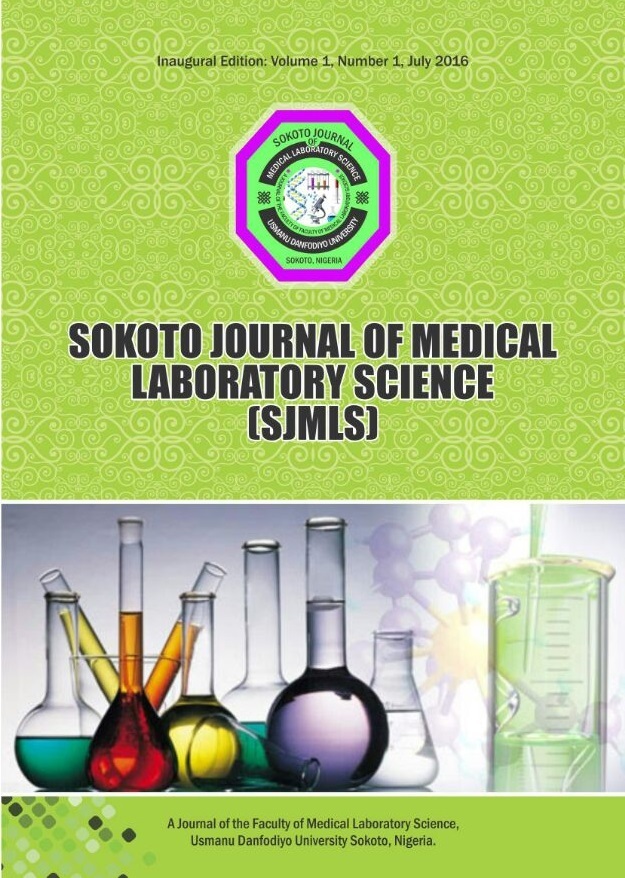Evaluation of 8-Hydroxy-2'-Deoxyguanosine, Interleukin-8 and Malondialdehyde Among Patients with Cardiovascular Diseases in Ibadan, Oyo State.
DOI:
https://doi.org/10.4314/sokjmls.v9i2.19Keywords:
8-hydroxy-2'-deoxyguanosine, interleukin-8, malondialdehyde, cardiovascular diseases, biomarkers, oxidative stress, inflammationAbstract
Cardiovascular diseases (CVDs) are a leading cause of mortality and morbidity worldwide, with various risk factors contributing to their development and progression. Among these risk factors, oxidative stress and inflammation play crucial roles in the pathogenesis of CVDs. This study evaluated the levels of 8-hydroxy-2'-deoxyguanosine (8-OHdG), interleukin-8 (IL-8), and malondialdehyde (MDA) among cardiac patients and explored their potential as biomarkers for cardiac conditions. This case-control study enrolled 121 cardiac patients from the Cardiology Unit of University College Hospital and controls from Ibadan metropolis. Demographic and clinical data were collected, and blood samples were obtained to measure serum levels of 8-OHdG, IL-8, and MDA using ELISA techniques. Correlations between biomarker levels were analyzed using student t-test. Patients with CVD conditions IL-8, and MDA compared with healthy controls. In this study, the Control group showed mean values of 0.09 ng/ml ± 0.01 for 8-OHdG, 55.50 pg/ml ± 2.06 for IL-8, and 1.21 ng/ml ± 0.10 for MDA, the CVD patients group exhibited markedly higher mean values for 8-OHdG (0.416 ng/ml ± 0.11), IL-8 (100.84 pg/ml ± 4.91), and MDA (2.64 ng/ml ± 0.11) with p- values 8-OHdG(P=0.0021), IL-8 (P=0.001) and MDA(P=0.001) in CVD patients compared to healthy controls, indicating heightened oxidative stress and inflammation in the test group. The strong positive correlations observed among the three biomarkers suggest shared underlying mechanisms in the development of CVDs. These findings underscore the potential of these biomarkers as diagnostic or prognostic tools for cardiovascular diseases, offering insights into early detection, risk stratification, and treatment monitoring to improve patient outcomes




